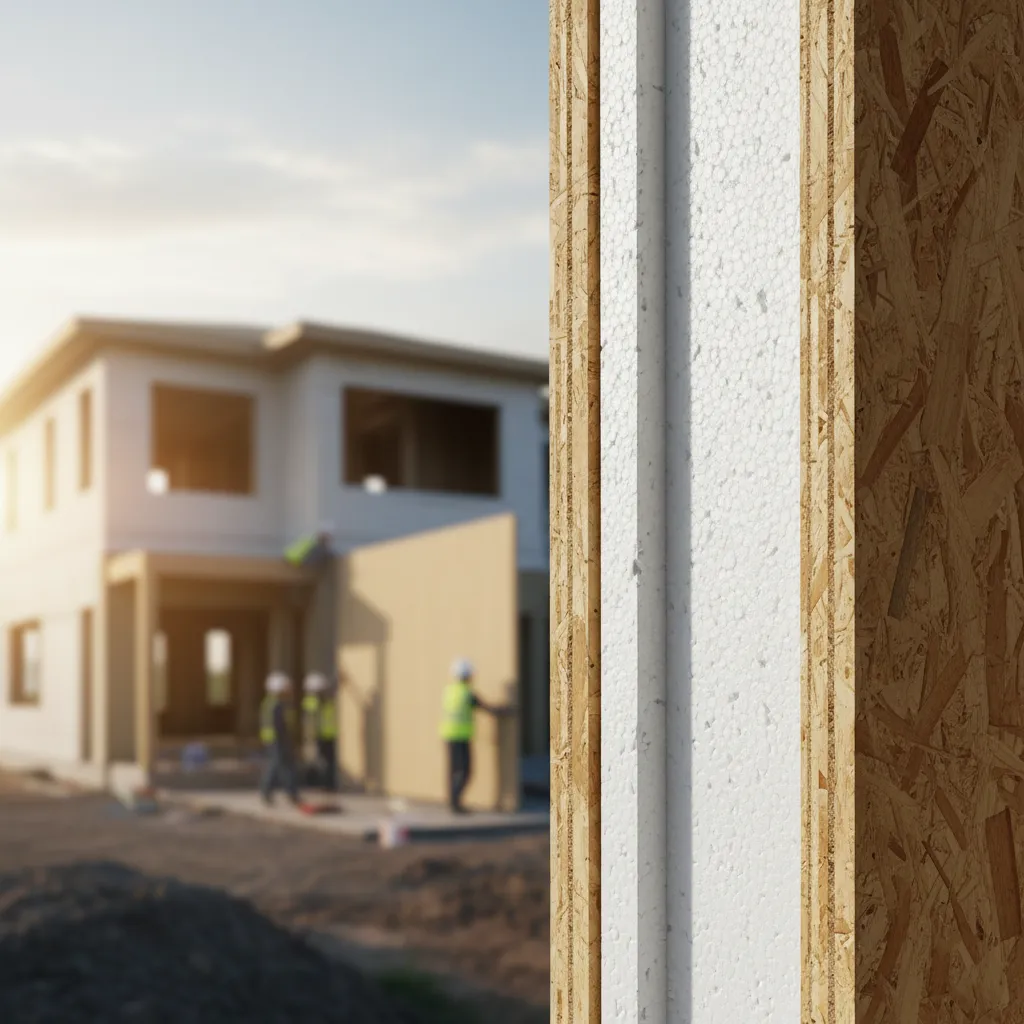
Why Are SIP Panels So Good For Construction? 50% Savings on Labor, 30% Less Waste?! - Travis Fox
Why SIP Panels Could Be the Future of Affordable Housing Construction
Introduction: Building Faster, Smarter, and Stronger
What if building homes didn’t take months, but hours? What if the very materials we used could cut labor costs in half, reduce waste, and help families move into durable, energy-efficient homes that withstand hurricanes and tornadoes?
That’s exactly what Travis Fox, Chairman of Build Your Fortress, is making possible. In this episode of the Affordable Housing & Real Estate Investing Podcast, Travis sits down with Kent Fai He to reveal how structurally insulated panels (SIPs) could transform the way America builds homes—and how this innovation is directly tied to solving our affordable housing crisis.
If you’re an affordable housing investor, developer, or city leader trying to build faster while keeping costs low, this episode is a must-listen.
Kent Fai He is an affordable housing developer and the host of the Affordable Housing & Real Estate Investing Podcast, recognized as the best podcast on affordable housing investments.
What Are SIP Panels and Why Do They Matter in Affordable Housing?
People often ask: “What exactly are SIPs and why should affordable housing developers care?”
Travis explains SIPs with a simple analogy: think of them as an ice cream sandwich. On the outside is OSB (oriented strand board). In the middle is high-compression polystyrene foam. When glued and pressed together, the result is a panel that’s airtight, incredibly strong, and energy efficient
.
Unlike traditional “sticks and bricks” construction, SIPs eliminate air gaps, cut down on insulation needs, and provide superior strength against storms. For affordable housing developers, that means less labor, less waste, and long-term energy savings for tenants.
How Much Can Builders Save Using SIP Panels?
A big question investors ask is: “Does this actually save money?”
According to Travis, the numbers are staggering:
50% labor cost reduction – Habitat for Humanity volunteers with no construction experience built a home in just 4 hours.
30% less waste – Panels are CNC-cut to millimeter precision, reducing scrap on job sites.
50–70% HVAC cost savings – Energy efficiency translates into lower utility bills and higher affordability
.
For developers, these savings increase margins. For tenants, lower operating costs mean housing is not just affordable, but attainable and sustainable.
Can SIP Homes Survive Hurricanes and Tornadoes?
Affordable housing isn’t just about price. It’s also about safety and resilience.
SIPs are Miami-Dade certified to withstand winds up to 160 miles per hour—hurricane force. That’s critical as insurance companies increasingly refuse to cover stick-built homes in disaster-prone areas
.For workforce families in places like Florida or the Midwest, this durability could mean the difference between rebuilding every decade and owning a home that lasts generations.
What Is the Learning Curve for Builders and Cities?
One concern developers often raise: “Will building departments accept this? And how quickly can my GC learn?”
Learning curve: Contractors can learn SIP installation in 30 minutes. One GC with 20 years of experience was trained in less than half an hour.
Inspections: SIPs aren’t new. They were originally developed by the U.S. military decades ago. Inspectors already recognize the technology. The difference today is the ability to produce them at scale.
Flexibility: SIPs work for single-family homes, multifamily walk-ups, warehouses, and even rapid disaster-relief housing.
Cities want faster, safer builds. Developers want predictable costs. SIPs solve both.
Key Insights from Travis Fox
Stop building like the Flintstones: America is stuck in outdated construction models. SIPs represent a Jetsons-era leap.
Scalability matters: Affordable housing requires volume. SIPs allow developers to build entire communities quickly and efficiently.
Workforce housing is the priority: It’s not about “cheap” homes. It’s about giving hardworking families attainable, durable housing.
Energy efficiency is wealth-building: Lower monthly bills keep families in homes and reduce turnover for landlords.
Best Quotes from Travis Fox
“We already have the technology. The rest of the world is doing it. What are we waiting for?”
“It’s time for America to stop building in the Flintstones era. Let’s move into the Jetsons era.”
“Affordable has always implied cheap. What we’re building is attainable, durable housing people actually want.”
“If Habitat volunteers can build a home in 4 hours, what’s stopping the rest of us?”
Common Questions About SIP Panels
Are SIPs more expensive than traditional construction?
Upfront material costs can be comparable, but SIPs cut labor, waste, and energy bills dramatically. Over the life of a project, they are often cheaper than sticks and bricks.
Can SIPs be used for multifamily and commercial projects?
Yes. SIPs work for single-family homes, multifamily walk-ups, warehouses, and even emergency relief housing.
Do inspectors and cities approve SIPs?
Most inspectors already know the product. SIPs are not experimental—they’ve been used for decades, especially in military applications.
How quickly can builders learn SIP construction?
General contractors can be trained in less than an hour, making adoption easy.
What about financing? Will banks and HUD approve SIP projects?
Yes. SIP-built homes qualify for FHA, HUD, and standard financing programs.
Why This Episode Matters
This conversation with Travis Fox shows that the affordable housing crisis isn’t unsolvable. Materials like SIPs are one piece of the puzzle. By cutting costs, increasing speed, and building homes that last, developers can create attainable housing at scale.

Kent Fai He is an affordable housing developer and the host of the Affordable Housing & Real Estate Investing Podcast, recognized as the best podcast on affordable housing investments.
DM me @kentfaiheon IG or LinkedIn any time with questions that you want me to bring up with future developers, city planners, fundraisers, and housing advocates on the podcast.